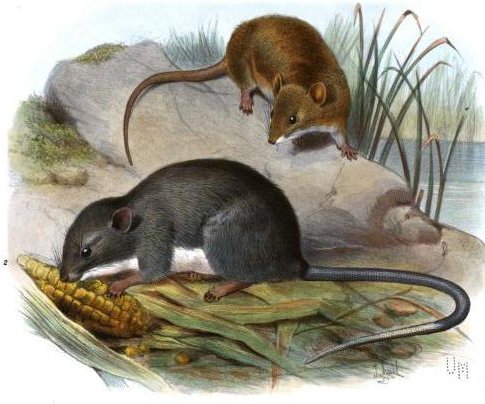Facts About Oryzomys couesi
Meet the Coues' Rice Rat: A Semi-Aquatic Marvel
Oryzomys couesi, commonly known as Coues' Rice Rat, is a fascinating semi-aquatic rodent belonging to the family Cricetidae. This adaptable creature thrives in a variety of wet habitats, such as marshes, and even in drier forests and shrublands. Its range extends from the southernmost tip of Texas, through Mexico and Central America, all the way to northwestern Colombia.
Appearance and Lifestyle
Weighing between 43 to 82 grams, Coues' Rice Rat sports buff to reddish fur on its back and white to buff fur on its underside. Medium to large in size, this rat has evolved specialized features for its semi-aquatic lifestyle, including reduced tufts on its hind feet. Primarily active at night, it constructs nests from vegetation, suspending them among reeds about a meter above the ground.
Diet and Reproduction
An omnivore, Oryzomys couesi enjoys a varied diet of plant material and animal matter, including seeds and insects. It breeds year-round, with females giving birth to around four young ones after a gestation period of 21 to 28 days.
Complex Taxonomy
The classification of O. couesi has been a subject of much debate, with numerous subspecies and related species described over the years. Recent DNA studies suggest that what we consider O. couesi might actually comprise several distinct species, each originating from different parts of its broad range.
Conservation Status
Ecologically, O. couesi is quite common and not currently a conservation concern. In fact, it is sometimes considered a pest in certain areas. However, habitat destruction, such as the drainage of wetlands, poses a threat to some populations. The International Union for Conservation of Nature (IUCN) lists it as "Least Concern" due to its wide distribution and adaptability. Nevertheless, localized populations, especially in Texas, face threats from habitat loss. The population on Cozumel Island has also declined, likely due to habitat disturbance and predation by introduced species.
A Unique Rodent Worth Protecting

 Guatemala
Guatemala